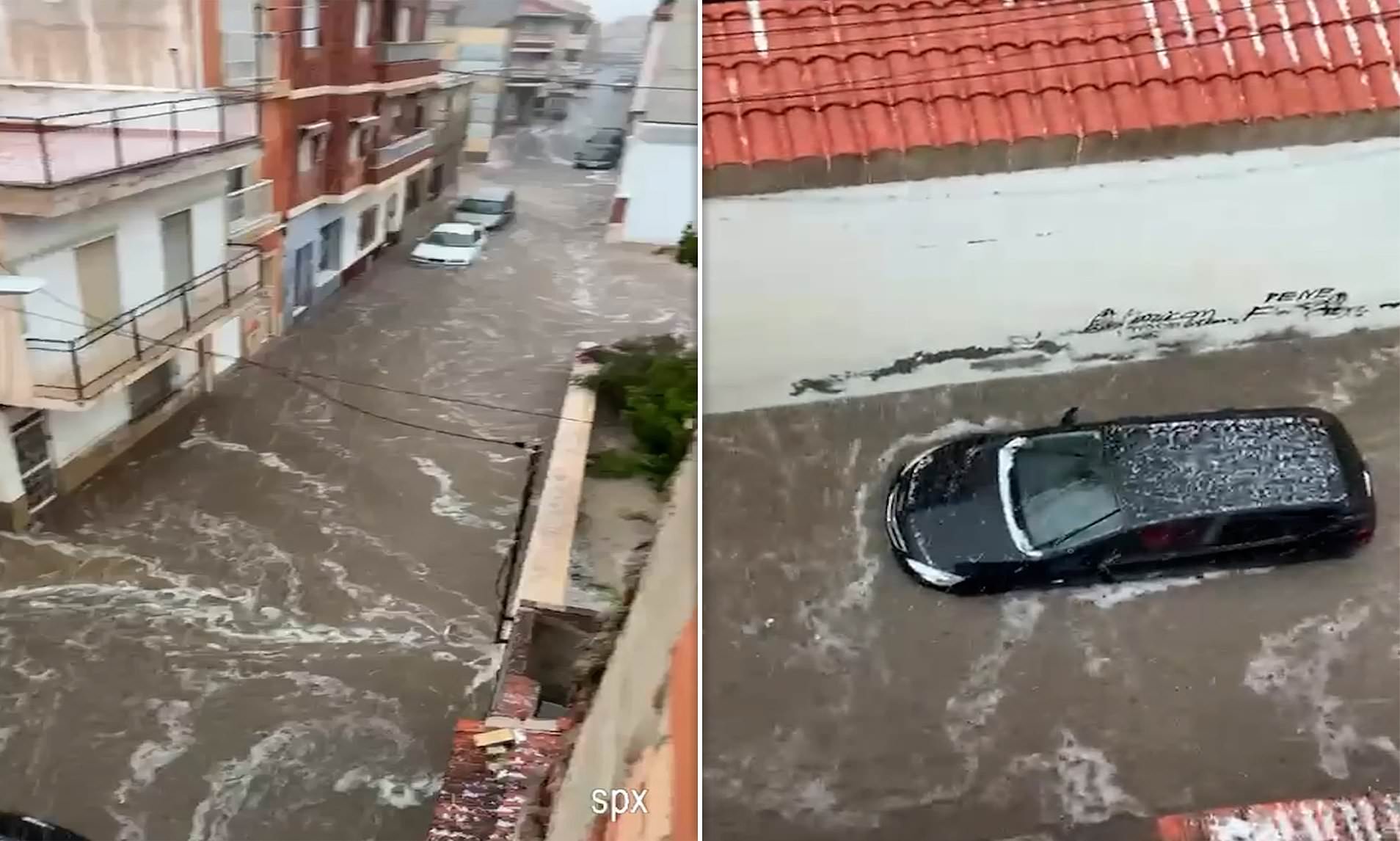A sudden hail and rainstorm has hit the south region.
Spain
, leaving famous tourist attractions blanketed in ice and inundated with floodwaters.
Enormous hailstones accompanied by torrential rains bombarded sections of the Costa Blanca overnight, leaving vacationers shocked as they scrambled to find shelter, transforming streets into turbulent streams.
Almeria, Murcia, Granada, and portions of the Costa Blanca were issued a yellow warning for heavy precipitation and possible hail by Spain’s national meteorological service, Aemet.
The town of Librilla, in Murcia, was among the worst affected, with 37 litres of hail per metre squared falling on the municipality in just half an hour.
Shocking video footage shows the streets submerged by fast-flowing floodwater as motorists try to navigate their way through the chaos.
Idyllic beaches were turned from golden to white in a matter of minutes as chunks of ice blanketed the sand.
It comes just days after Majorca was also battered by the extreme weather.
Townships like Manacor, Sant Llorenç, and Sa Pobla suffered significantly, yet other regions across the islands were likewise inundated by the flood.
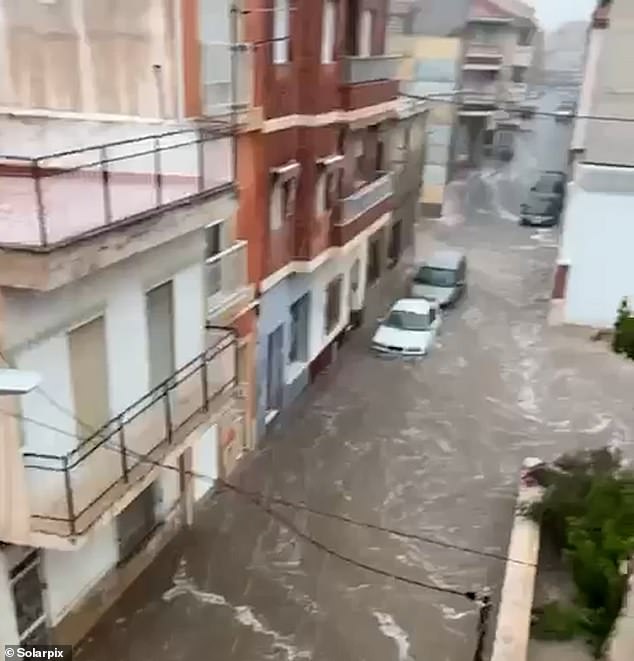
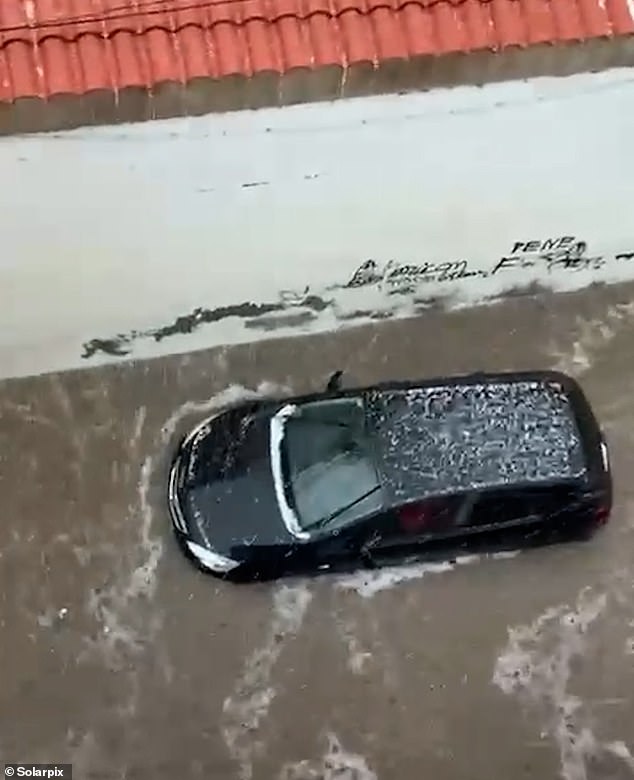
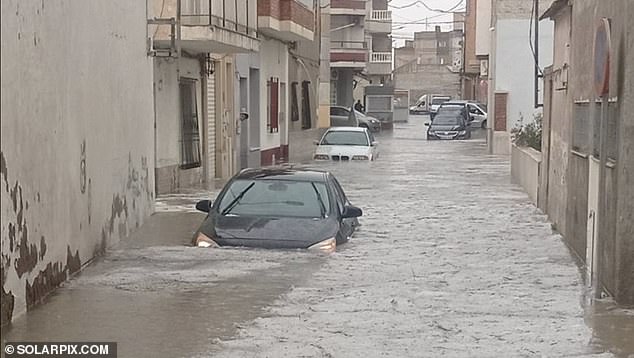
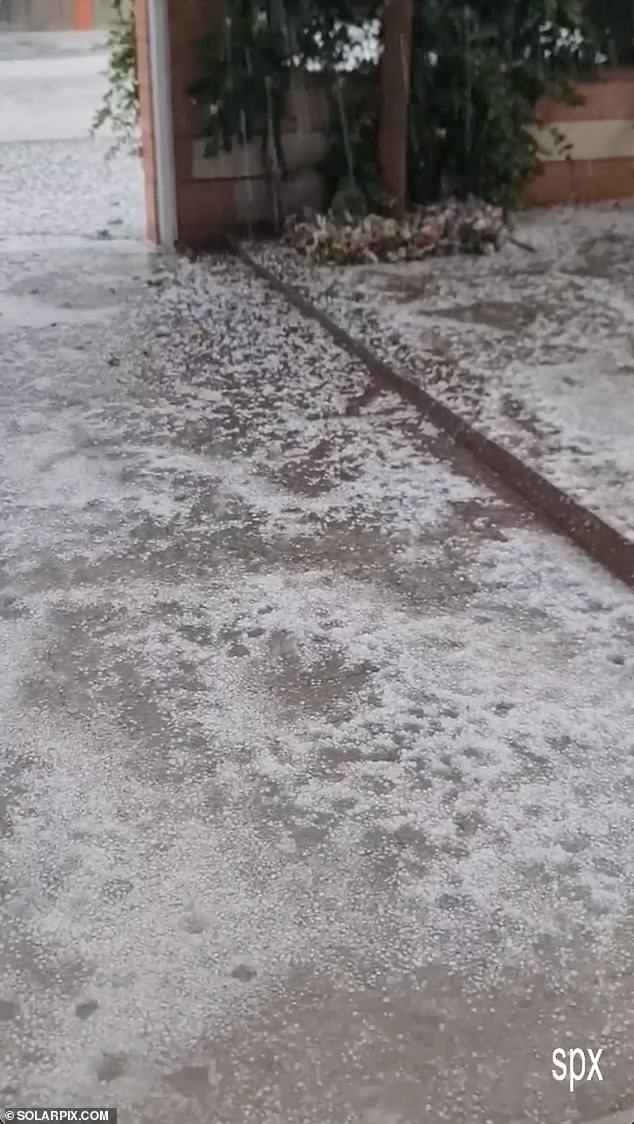
Videos shared on social media revealed how furniture and tiles on usually sunny patios outside hotels and residential apartments were damaged by the hailstorms as tourists took cover indoors.
Spain’s national meteorological agency, AEMET, has issued yellow alerts for Majorca and Menorca due to heavy rain. The organization reported that over 50 liters of rain fell per square meter in Manacor within just thirty minutes, leading to sudden flooding.
The alerts remained effective until the evening of May 13, as certain areas of the island experienced up to 60 to 70 liters of rain per square meter within just two or three hours.
The cause of the unusual and damaging weather phenomenon was attributed to what is called ‘DANA’ in Spain, which stands for ‘Depresión Aislada en Niveles Altos,’ or ‘Isolated Depression at High Levels.’
These occurrences happen when a mass of chilly air breaks away from the jet stream above the Atlantic Ocean and descends onto the warmer Mediterranean airspace.
The collision of differing temperatures and pressures leads to significant instability, frequently causing heavy rainfall, severe hailstorms, and sudden flooding within brief intervals.
DANAs generate unpredictable and sluggish storm systems that can deposit massive amounts of rainfall and hail over the same area within just a few hours.
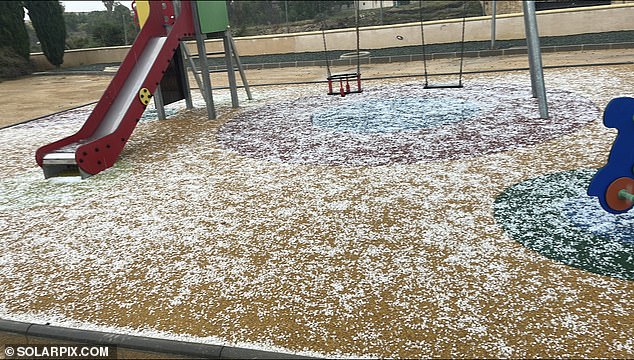
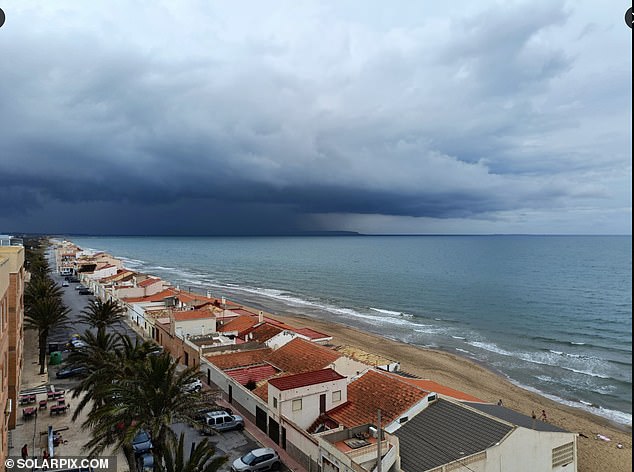
In Spain, where the soil frequently lacks moisture and the infrastructure is not equipped to handle floods, such downpours can lead to significant chaos.
The severe storm hitting Majorca arrives just days after heavy rains devastated towns in Valencia, not even half a year since the area experienced devastating floods that claimed over 230 lives.
British tourists were advised not to travel following massive hailstorms that hit the tourist hotspot in eastern Spain on Thursday, as AEMET issued an orange alert signaling ‘substantial risk.’
The hailstorm followed by ensuing floods led to pandemonium as people in Valencia hurriedly sought shelter during a time when typical daytime temperatures usually stay near 20 degrees Celsius.
Hardly credible videos revealed the extent of vehicle damage caused by the hailstones, while some cars got trapped amidst ice sheets several inches thick in Villar del Arzobispo, leaving locals unable to assist.
Other jarring videos shared on social media depicted the torrent pouring through the usually sunny avenues of Guadassequies and l’Olleria.
The abrupt storm brought additional suffering to the area’s inhabitants, with numerous individuals losing their means of living during the significant ‘cold snap’ that took place in October 2024. This event led to extensive floods, resulting in the deaths of 232 people.
The perceived shortcomings of the authorities in preparing for emergencies, communicating effectively, and responding to last year’s weather event known as DANA have left millions feeling let down.
Read more



